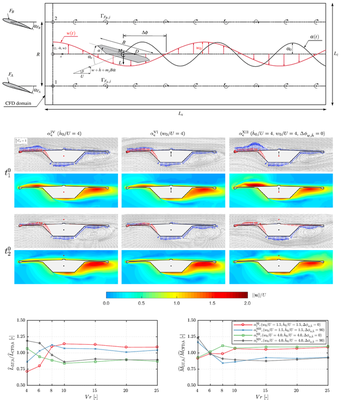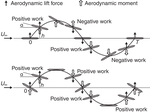Computational Wind Engineering
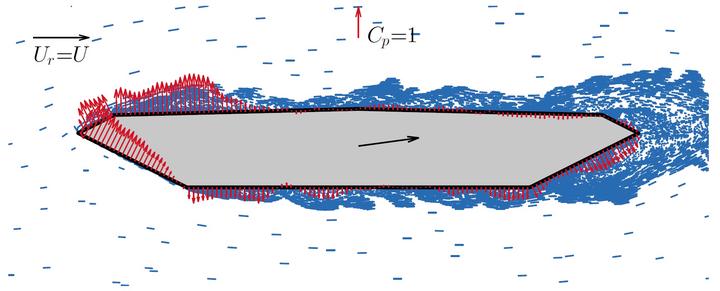
Computational Fluid Dynamics (CFD) has become an effective tool in the aerodynamic design of civil structures in the past few decades. These models can serve as a powerful tool in designer’s arsenal during the initial design phase, allowing them to explore various structural shapes and configurations. However, wind engineers may view CFD models with a dose of suspicion due to their inherent numerical uncertainty (maybe rightfully so), but that should not hinder us from harnessing their potentials. CFD models are commonly used to compute the aerodynamic coefficients and rarely the aeroelastic response (e.g. flutter or buffeting), enabling engineers to determine design forces or assess human comfort.
My work on CFD centers around the 2D Vortex Particle Methods. Unlike traditional Eulerian grid-based methods (e.g. Finite Volume or Finite Element), these Lagrangian methods discretise the vorticity field on point-like units called particles. These particles carry concentrated vorticity (circulation) enabling fluid kinematics to be solved through Biot-Savart’s relation (imagine fluid velocity as a magnetic field and vorticity as current). Advancing the fluid dynamics is straightforward with any explicit time-integration scheme, including an operator splitting technique to account for viscosity. Immersed bodies, like we usually have for line-like structures (bridges, towers), can be discretised using the Boundary Element Method on panels, allowing boundary conditions to be imposed inside the Biot-Savart relation and Kelvin’s circulation theorem. The scalar nature of vorticity in 2D makes the vortex methods computationally efficient. A schematic of the method is shown below.

I worked on Vortex Methods from the perspective of aeroelastic analyses of structures. I used an in-house code, VXflow by Guido Morgenthal, and therefore, any extensions are related to this code. Next, part of the new methods and findings are summarised, in particular:
- On a turbulent Pseudo-3D Vortex Method
- On a numerical Active Turbulence Generator (ATG) for determining the complex aerodynamic admittance
- On the nonlinear interaction between the motion- and gust-induced aerodynamic forces
Turbulent Pseudo-3D Vortex Method
Computing the response of a structure subjected to free-stream turbulence (buffeting analysis) in CFD is notoriously computationally intensive. The 3D nature of free-stream turbulence requires a very fine discretisation to accurately capture turbulent scales and turbulent boundary layers in the fluid-structure interaction. To address this challenge, we developed a Turbulent Pseudo-3D Vortex method that combines the Laminar Pseudo-3D Vortex method (Morgenthal and McRobie 2002, Wind Struct. 5) with velocity-based free-stream random turbulence generation (Prendergast 2007, PhD Thesis, Univ. of Cambridge). The idea is to position 2D fluid planes (slices) along a line-like structure (e.g. bridge or tower) and introduce correlated free-stream turbulence upwind of the structure that preserves some key atmospheric statistical properties such as point spectra and coherence. The beam-like structure couples with the fluid slices through multiple vibration modes and we needed to demonstrate that the generated upstream turbulence remains correlated between slices. In other words, we needed to ensure that the wind felt by two people standing apart longitudinally on the bridge is not vastly different, as is the case in nature. Our Engineering Structures Paper shows this analytically for Vickery’s coherence with a certain loss due to a couple of assumptions. Later, in my PhD thesis, we can combined Davenport’s and Vickery’s coherence to eliminate the assumptions, resulting in improved coherence between slices.
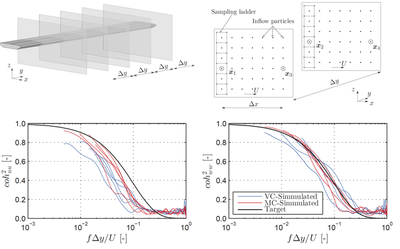
We used this method to conduct buffeting analysis of the Great Belt Bridge and then compared the structural displacements to the semi-analytical linear unsteady (LU) method, which represents common practice in bridge aerodynamics. The figure below shows a snapshot of the CFD simulation and response:
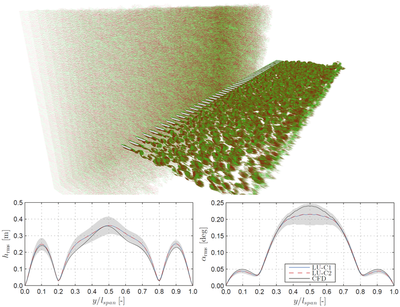
Further, we computed the critical flutter limit for the first time with high spatial discretisation (50 slices), and compared to previous experimental results:
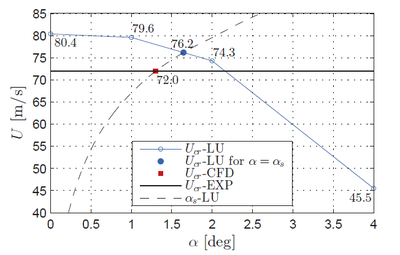
Determination of Complex Aerodynamic Admittance using a Numerical Active Turbulence Generator
Simulating sinusoidal deterministic free-stream gusts can be quite useful in practice, particularly when determining aerodynamic admittance. In wind tunnel testing, this is commonly done using an apparatus known as an Active Turbulence Generator (ATG). An ATG is essentially a set of vertically arranged airfoils that pitch sinusoidally. When fluid flows through them, a sinusoidal gust is generated downstream. We propose a numerical ATG model that involves injecting vortex particles at two locations to mimic the wake of two pitching airfoils that are located upstream of the section (see figure below). By adjusting the circulation amplitude, we were able to generate a sinusoidal gust downstream with prescribed intensity. If the ‘virtual’ airfoils are in phase, the gust is vertical; if they’re out of phase, the gust is longitudinal (pulsating). We derived an analytical relation between the gust and circulation amplitudes, building upon an existing model (Stapountzis 1978, J. Phys. E. Sci. Instrum. 15).
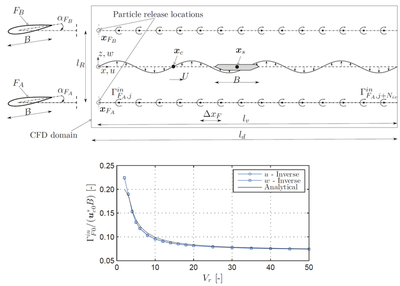
We used this method to determine the complex aerodynamic admittance, which represents a complex transfer function between the free-stream gusts and buffeting forces. This is particularly useful in practice since aerodynamic admittance is a key ingredient when performing buffeting analysis using reduced-order models. We verified the accuracy of our numerical admittance results by comparing them to the analytical Sears admittance for a flat plate, and further validated them in the Politecnico di Milano Wind Tunnel using the Third Bosphorus Bridge deck as a test case. For all the nitty-gritty details, check out our Journal of Wind Engineering and Industrial Aerodynamics paper.
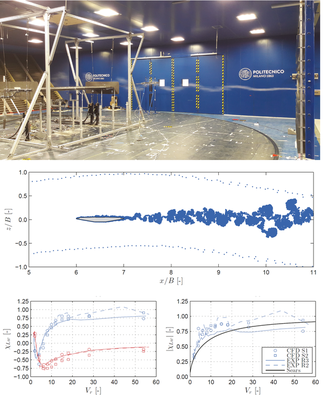
Nonlinear Interaction between the Motion- and Gust-induced Aerodynamic Forces
Another interesting application for which we employed the numerical ATG is to study the interaction between the gust- and motion-induced forces acting on bridge decks. To do so, we first made sure that the individual force (gust and motion) remain linear for a given amplitude of the resultant angle of attack. Then, the bridge deck was subjected to both, motion and gust, and the resultant force was compared with the Linear Unsteady (LU) model, which simply superimposes the individual components. This was done in a parametric way for various angle of attack amplitudes and phase between the individual forces. Interestingly, we found out that for bluff decks at large angles of attacks, the difference is prominent, yielding the conclusion that the interaction causes nonlinear behaviour. This is quite important as the LU model is typically the go-to model when it comes to practical applications. The study was done primarely by Samuel Tesfaye, a PhD student with whom I co-advise as a postdoc, and the findings are summarized in our Fluids and Structures paper.
